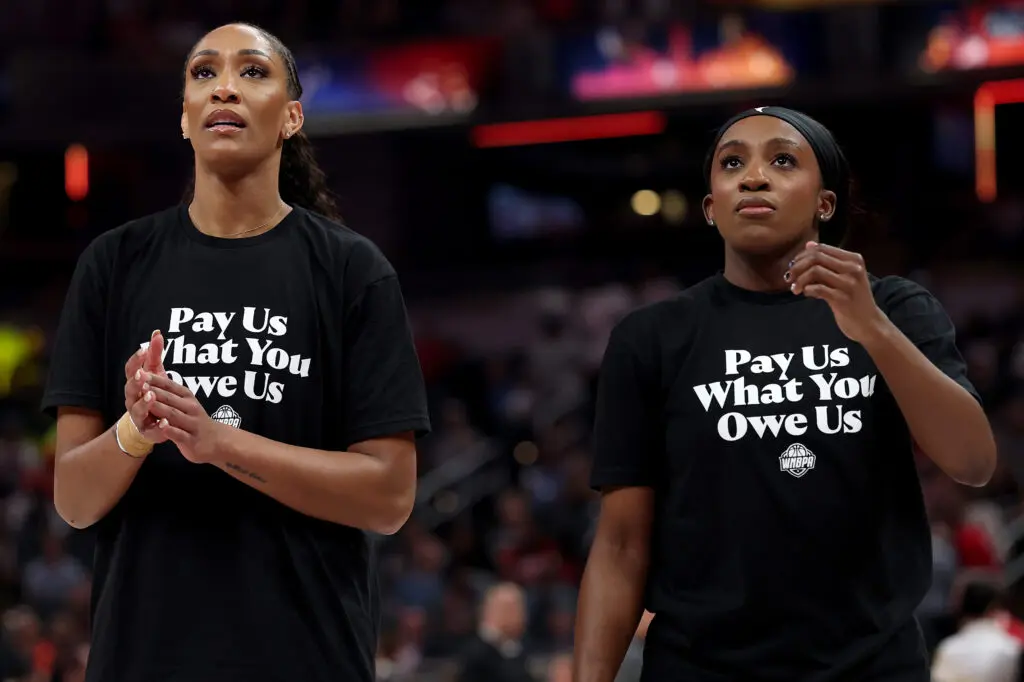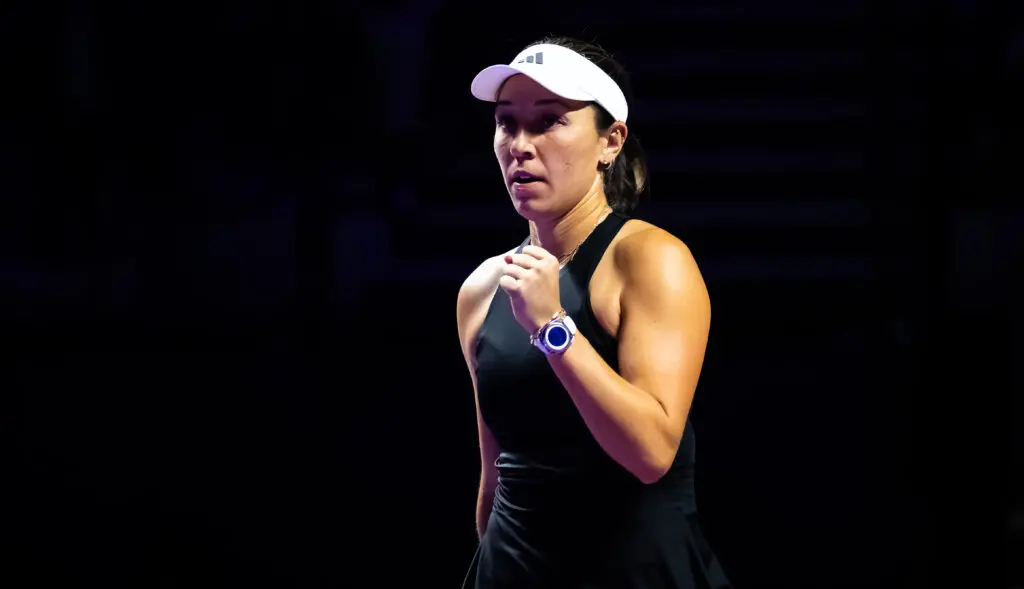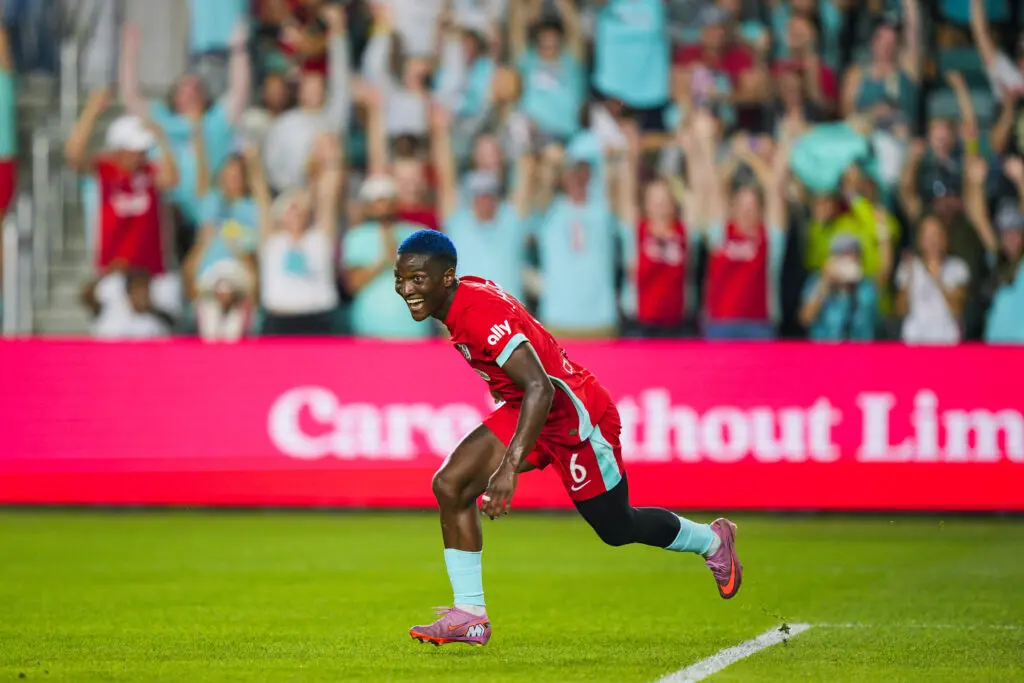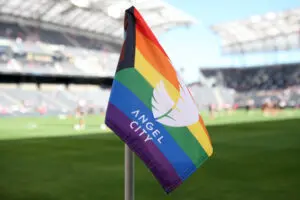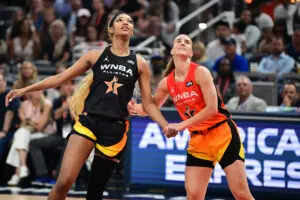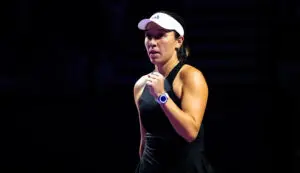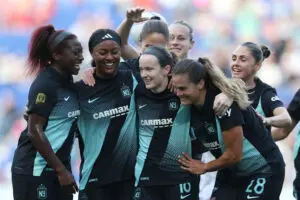The NCAA Tournament brackets are out, the matchups are set and March Madness is officially upon us! We’re just days away from the most exciting weekend on the sports calendar, and the First Four will kick things off even sooner this year. Beginning on Wednesday night, 68 teams will battle it out for one trophy.
With so many games and so much on the line, there are countless storylines to follow. Here are some of my biggest takeaways from this year’s bracket.
The First Four is an excellent addition
As part of the NCAA’s ongoing effort to address gender inequities between the men’s and women’s tournaments, they added four more teams to the women’s field this year to match the men’s side.
We can talk about whether some of the measures — both enacted and proposed — will bring about true equity, but the First Four should have an immediate positive impact.
Consider this: Incarnate Word, who hasn’t even been in Division I for a full decade and has yet to finish .500 or better in a Division I season, will for two hours on Wednesday night have the attention of the entire women’s basketball world as it plays on national TV. The Cardinals never even won an NCAA Tournament game in Division II (they only made it once), but in facing fellow No. 16 seed Howard rather than a No. 1 seed, they have a realistic chance at a tournament win.
That’s the kind of moment that can change the trajectory of a program. From the recruiting boost it will undoubtedly provide, to the revenue it will bring in, the impact of playing in that single game goes far beyond what happens on the court.
The same can be said of the other No. 16 seeds in the First Four, and even the First Four at-large teams to a certain extent. That, without question, is a boon to the sport.
Mid-major disrespect is alive and well
It’s nothing new to see the committee slot teams from outside the traditional power conferences into seed lines that are much too low, but it’s still a conversation we should have every year until they stop doing it.
Some of the best mid-major programs in the country got misplaced again this season. No. 6 BYU, No. 11 Princeton and No. 12 FGCU were each seeded worse than our projections and Charlie Creme’s bracketology, and all deserved to be at least one spot higher.
When the committee makes the decision to under-seed a mid-major, it doesn’t just hurt that team. It also hurts the team slotted across from it, which is usually a power conference team. In this case, No. 6 Kentucky and No. 5 Virginia Tech are forced to face ranked teams in the first round, and No. 3 Michigan will likely have to get past a 26-3 BYU squad to get to the Sweet 16.
Does Shaylee miss❓ No. @byuwbb | UCU #WCChoops Tournament pic.twitter.com/UNT9Le8GfX
— WCC Basketball (@WCChoops) March 8, 2022
When teams beat up on lesser opponents, they continue to get penalized for the lack of strength of their schedule. That shouldn’t be the case if all a team does is blow out everyone it plays. What more could they be expected to do?
High seeds aren’t safe in the Bridgeport region
While we’re on the topic of under-seeded mid-majors, it’s worth pointing out that as frustrating as it can be to see these schools not get the placement they deserve, it also gives us juicy upset potential. Look no further than the Bridgeport region for some prime examples.
Her Hoop Stats gives No. 12 UMass a 47.7 percent chance to knock off No. 5 Notre Dame, and it actually favors Princeton over Kentucky in the 11 vs. 6 matchup. While the model may slightly overrate those upset chances, those matchups should be much closer than the seeds suggest.
Then there’s No. 13 IUPUI vs. No. 4 Oklahoma. IUPUI, led by a must-see player in Macee Williams, took Michigan to overtime and knocked off Iowa. Both of those games were on the road, and both of those opponents are stronger than Oklahoma is. The Jaguars will have no fear going into the Sooners’ building, making this first-round matchup one to watch.
The danger for the high seeds in this region doesn’t just lie in the first round, either. No. 1 seed NC State will have to play a pseudo-road game in the Elite Eight if chalk holds. They are matched up with No. 2 seed UConn in the Huskies’ home state, and it doesn’t help that UConn is finally healthy and clicking. Don’t blame the committee — this was a geography problem — but the top-seeded Wolfpack will have their work cut out for them if they want to end UConn’s streak of 13 straight Final Four appearances.
Tune into Utah vs. Arkansas
When it comes to entertainment value, I don’t really care whether a basketball game is high scoring or low scoring, fast paced or slow. I just want good basketball and a close game. Impressive defense gives us a 47-45 game? Fine with me!
Most fans, of course, would not agree. The Debbie Antonelli school of “shooting ‘till your arm falls off” generally makes for appealing basketball (and for what it’s worth, as long as it’s a close game, I can get into that style, too).
If that’s your speed, don’t miss the 7 vs. 10 matchup in the Spokane region. Arkansas’ offense ranks 35th in points per possession, but they are outside of the top 150 in points per possession allowed on defense. And if you think that’s a big disparity, try Utah’s on for size: eighth on offense and 271st on defense.
Ryl33 👌#SideBySide 🐗🏀 pic.twitter.com/yh8bjv45Uo
— Razorback WBB (@RazorbackWBB) March 4, 2022
Add in the fact that both teams rank in the top 25 in 3s attempted per game, with over 25 each, and this one should be a launch fest. Circle it on your schedule if you enjoy points.
Potential rematches to watch for
There are always going to be potential rematches if you go deep enough into the bracket, but there are two in particular that stand out to me before we reach the Elite Eight.
The first is Indiana vs. Kentucky. If both teams avoid upsets, they’ll meet in the second round in a rematch of one of the biggest games of the season’s first week. The Hoosiers handed their border rival a 21-point drubbing on Nov. 14, but that was before Rhyne Howard went supernova and teammates like Dre’Una Edwards and Jazmine Massengill started stepping up. Indiana hasn’t faced the Kentucky team of the last few weeks — the one that took down South Carolina to win the SEC tournament.
The other will take place in the Sweet 16 if both teams make it. No. 2 seed Baylor and No. 3 seed Michigan find themselves paired up once again after two overtime games in the last year. The first was just under a year ago when Baylor edged out the Wolverines in the Sweet Sixteen, and Michigan exacted its revenge on Dec. 19.
If you don’t have a dog in the fight, you can only hope that we get a rubber match and that it lives up to the previous two thrillers.
South Carolina’s path sets up well
This isn’t exactly noteworthy — the Gamecocks were going to be the favorites no matter how the matchups came out. But the committee did reward their dominance, whether intentionally or not, by providing them with a favorable path to the title.

Assumptions in March are probably never a good idea, but if we assume anyway that South Carolina makes it out of the first weekend, the chalk bracket would have them draw No. 4 seed Arizona in the Sweet 16. The Wildcats are backing into the tournament on the heels of four losses in their last seven and might struggle to get to 40 against the Gamecocks’ defense.
If chalk holds, South Carolina would have an Elite Eight date with No. 2 seed Iowa, who our bracketology and Charlie Creme’s each had as a No. 3 seed. (And how about the top two National Player of the Year candidates in Aliyah Boston and Caitlin Clark potentially playing on the same court?)
Finally, South Carolina is on the opposite side of the bracket from arguably the next three best teams: Stanford, NC State and UConn. Dawn Staley’s squad certainly didn’t need any help, but they got some.
Stars on double-digit seeds can fill it up
If you’re here, you’re surely familiar with Caitlin Clark, Iowa’s superstar sophomore who leads the nation in scoring at 27.4 points per game. Are you familiar, however, with the next four on the scoring list?
They’re all in this tournament, and they all play for a double-digit seed.
There’s No. 11 Villanova’s Maddy Siegrist, who checks in at second with 25.9 points per game. Behind her is Jasmine Dickey, the Delaware dynamo who dropped a 50-piece in February. Fourth is Kierstan Bell, although she doesn’t qualify officially based on the NCAA’s minimum games played requirement. Her FGCU Eagles play one of the most fun styles of basketball in the country. Rounding out the top five is Dyaisha Fair, whose explosiveness makes No. 13 Buffalo a scary draw for No. 4 Tennessee.
This is the beauty of the NCAA Tournament. Clark has played on ESPN, of course, but as for players like Dickey or Fair? The world deserves a chance to see them hoop, and March Madness gives us that chance.
Illinois State’s journey is an incredible story
I have to end this on a personal note. There’s never a shortage of inspiring stories this time of year, but it’s not every year you get one in your own backyard. As someone who’s been covering Illinois State locally, I couldn’t wrap this up without sharing their story.
What March is all about! #MarchMadness x 🎥 @ValleyHoopspic.twitter.com/XhQCzUwe44
— NCAA March Madness (@MarchMadnessWBB) March 13, 2022
It started five years ago when Illinois State took a chance on Kristen Gillespie, who had never been a Division I head coach. They were coming off of three straight seasons with single-digit wins, including a 2-28 campaign in 2014-15.
Through character and culture, Gillespie has spent the last five seasons turning the program around and instilling belief in her players. There’s likely no better example of that belief than the team’s performance this season: The Redbirds endured a 3-7 start and a four-game losing streak in February to rebound and become the Missouri Valley Conference champions two weeks later.
If that wasn’t enough to add credence to their underdog story, they did it on the strength of two stars – DeAnna Wilson and JuJu Redmond – who began their careers at junior colleges.
The national headlines will be about the No. 1 seeds, the Final Four contenders and the trendy upset picks. But stories like Illinois State – that’s what March is all about.
Calvin Wetzel is a contributing writer at Just Women’s Sports, covering basketball and betting. He also contributes to Her Hoop Stats, CBS SportsLine and FiveThirtyEight. Follow him on Twitter at @cwetzel31.


